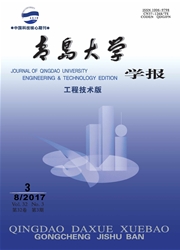

 中文摘要:
中文摘要:
针对双馈风力发电系统的控制目标,本文研究了风机特性及其数学模型,并采用端口受控哈密顿方法,研究了双馈风力发电机的哈密顿系统的建模与控制问题,建立了双馈感应发电机的端口受控哈密顿系统非线性模型,根据状态误差端口受控哈密顿的控制原理,选取了期望的闭环哈密顿能量函数,并利用系统互联和阻尼配置以及能量成形方法设计了双馈感应发电机控制器,最终实现了系统的最大风能追踪控制,定子电流频率的恒定以及对有功功率和无功功率的独立控制目标。通过Matlab/Simulink进行仿真验证,仿真结果表明,在该控制策略下,系统对期望转速有快速、精确的跟踪效果,实现了最大风能追踪控制、变速恒频控制,有功功率和无功功率的独立控制。该研究在双馈风力发电系统上有良好的控制效果,具有一定的应用前景。
 英文摘要:
英文摘要:
Considering the control objectives of the doubly-fed wind power generation system, in this paper, the mathematical properties of the wind turbine are firstly studied, and then the Hamiltonian systems modeling and the control problems of the double-fed wind power generation system are also studied by a port-controlled Hamiltonian(PCH) method. The non-linear PCH system model of the doubly-fed induction generator (DFIG) is established. According to the state error PCH control principle, the desired closed loop Hamiltonian energy function is selected, and then by using Energy shaping, interconnected configura- tion and damping injection method, a DFIG controller is finally designed. Eventually the control objective of the maximum wind energy tracking control, the stator current frequency constant as well as the inde- pendent control of active and reactive power are all achieved. The simulation results show that under this control strategy, the desired speed can be tracked fast and accurately. We eventually achieve the objectives of maximum wind power tracking control, variable-speed constant-frequency control and the reactive power and reactive power independently control. The study can be used on the double-fed wind power generation system with a good control effect,and a certain application prospects can be also ensured.
 同期刊论文项目
同期刊论文项目
 同项目期刊论文
同项目期刊论文
 Port-hamiltonian system modeling and position tracking control of PMSM based on maximum output power
Port-hamiltonian system modeling and position tracking control of PMSM based on maximum output power Stochastic resonance in an uncoupled parallel array of static nonlinear systems via numerical simula
Stochastic resonance in an uncoupled parallel array of static nonlinear systems via numerical simula Position control of permanent magnet synchronous motor based on improved single neuron and fuzzy con
Position control of permanent magnet synchronous motor based on improved single neuron and fuzzy con Observer and command-filter-based adaptive fuzzy output feedback control of uncertain nonlinear syst
Observer and command-filter-based adaptive fuzzy output feedback control of uncertain nonlinear syst Position control of the induction motor based on the state eerror port-controlled Hamiltonian system
Position control of the induction motor based on the state eerror port-controlled Hamiltonian system Position control of the permanent magnet synchronous motor based on backstepping method and load tor
Position control of the permanent magnet synchronous motor based on backstepping method and load tor Position tracking control for chaotic permanent magnet synchronous motors via indirect adaptive neur
Position tracking control for chaotic permanent magnet synchronous motors via indirect adaptive neur 期刊信息
期刊信息
